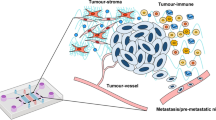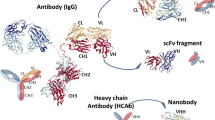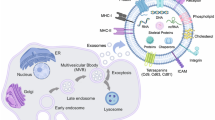Abstract
The detection and analysis of circulating tumor cells (CTCs) from patients´ blood is important to assess tumor status; however, it remains a challenge. In the present study, we developed a programmable DNA-responsive microchip for the highly efficient capture and nondestructive release of CTCs via nucleic acid hybridization. Transparent and patternable substrates with hierarchical architectures were integrated into the microchip with herringbone grooves, resulting in greatly enhanced cell-surface interaction via herringbone micromixers, more binding sites, and better matched topographical interactions. In combination with a high-affinity aptamer, target cancer cells were specifically and efficiently captured on the chip. Captured cancer cells were gently released from the chip under physiological conditions using toehold-mediated strand displacement, without any destructive factors for cells or substrates. More importantly, aptamer-containing DNA sequences on the surface of the retrieved cancer cells could be further amplified by polymerase chain reaction (PCR), facilitating the detection of cell surface biomarkers and characterization of the CTCs. Furthermore, this system was extensively applied to the capture and release of CTCs from patients´ blood samples, demonstrating a promising high-performance platform for CTC enrichment, release, and characterization.

Similar content being viewed by others
References
Alix-Panabières, C.; Pantel, K. Challenges in circulating tumour cell research. Nat. Rev. Cancer 2014, 14, 623–631.
Paterlini-Brechot, P.; Benali, N. L. Circulating tumor cells (CTC) detection: Clinical impact and future directions. Cancer Lett. 2007, 253, 180–204.
Park, J. M.; Lee, J. Y.; Lee, J. G.; Jeong, H.; Oh, J. M.; Kim, Y. J.; Park, D.; Kim, M. S.; Lee, H. J.; Oh, J. H. et al. Highly efficient assay of circulating tumor cells by selective sedimentation with a density gradient medium and microfiltration from whole blood. Anal. Chem. 2012, 84, 7400–7407.
Seal, S. H. A sieve for the isolation of cancer cells and other large cells from the blood. Cancer 1964, 17, 637–642.
Lee, H. J.; Oh, J. H.; Oh, J. M.; Park, J. M.; Lee, J. G.; Kim, M. S.; Kim, Y. J.; Kang, H. J.; Jeong, J.; Kim, S. I. et al. Efficient isolation and accurate in situ analysis of circulating tumor cells using detachable beads and a high-pore-density filter. Angew. Chem., Int. Ed. 2013, 52, 8337–8340.
Tang, Y. D.; Shi, J.; Li, S. S.; Wang, L.; Cayre, Y. E.; Chen, Y. Microfluidic device with integrated microfilter of conical-shaped holes for high efficiency and high purity capture of circulating tumor cells. Sci. Rep. 2014, 4, 6052.
Cristofanilli, M.; Budd, G. T.; Ellis, M. J.; Stopeck, A.; Matera, J.; Miller, M. C.; Reuben, J. M.; Doyle, G. V.; Allard, W. J.; Terstappen, L. W. et al. Circulating tumor cells, disease progression, and survival in metastatic breast cancer. N. Engl. J. Med. 2004, 351, 781–791.
Wen, C. Y.; Wu, L. L.; Zhang, Z. L.; Liu, Y. L.; Wei, S. Z.; Hu, J.; Tang, M.; Sun, E. Z.; Gong, Y. P.; Yu, J. et al. Quick-response magnetic nanospheres for rapid, efficient capture and sensitive detection of circulating tumor cells. ACS Nano 2014, 8, 941–949.
Xie, M.; Lu, N. N.; Cheng, S. B.; Wang, X. Y.; Wang, M.; Guo, S.; Wen, C. Y.; Hu, J.; Pang, D. W.; Huang, W. H. Engineered decomposable multifunctional nanobioprobes for capture and release of rare cancer cells. Anal. Chem. 2014, 86, 4618–4626.
Wang, S. T.; Wang, H.; Jiao, J.; Chen, K. J.; Owens, G. E.; Kamei, K.; Sun, J.; Sherman, D. J.; Behrenbruch, C. P.; Wu, H. et al. Three-dimensional nanostructured substrates toward efficient capture of circulating tumor cells. Angew. Chem., Int. Ed. 2009, 48, 8970–8973.
Zhang, N. G.; Deng, Y. L.; Tai, Q. D.; Cheng, B. R.; Zhao, L. B.; Shen, Q. L.; He, R. X.; Hong, L. Y.; Liu, W.; Guo, S. S. et al. Electrospun TiO2 nanofiber-based cell capture assay for detecting circulating tumor cells from colorectal and gastric cancer patients. Adv. Mater. 2012, 24, 2756–2760.
Nagrath, S.; Sequist, L. V.; Maheswaran, S.; Bell, D. W.; Irimia, D.; Ulkus, L.; Smith, M. R.; Kwak, E. L.; Digumarthy, S.; Muzikansky, A. et al. Isolation of rare circulating tumour cells in cancer patients by microchip technology. Nature 2007, 450, 1235–1239.
Stott, S. L.; Hsu, C. H.; Tsukrov, D. I.; Yu, M.; Miyamoto, D. T.; Waltman, B. A.; Rothenberg, S. M.; Shah, A. M.; Smas, M. E.; Korir, G. K. et al. Isolation of Circulating tumor cells using a microvortex-generating herringbone-chip. Proc. Natl. Acad. Sci. USA 2010, 107, 18392–18397.
Wang, S. T.; Liu, K.; Liu, J.; Yu, Z. T. F.; Xu, X. W.; Zhao, L. B.; Lee, T.; Lee, E. K.; Reiss, J.; Lee, Y. K. et al. Highly efficient capture of circulating tumor cells by using nanostructured silicon substrates with integrated chaotic micromixers. Angew. Chem., Int. Ed. 2011, 50, 3084–3088.
Yoon, H. J.; Kim, T. H.; Zhang, Z.; Azizi, E.; Pham, T. M.; Paoletti, C.; Lin, J.; Ramnath, N.; Wicha, M. S.; Hayes, D. F. et al. Sensitive capture of circulating tumour cells by functionalized graphene oxide nanosheets. Nat. Nanotechnol. 2013, 8, 735–741.
Shen, Q. L.; Xu, L.; Zhao, L. B.; Wu, D. X.; Fan, Y. S.; Zhou, Y. L.; Ouyang, W. H.; Xu, X. C.; Zhang, Z.; Song, M. et al. Specific capture and release of circulating tumor cells using aptamer-modified nanosubstrates. Adv. Mater. 2013, 25, 2368–2373.
Sheng, W. A.; Chen, T.; Tan, W. H.; Fan, Z. H. Multivalent DNA nanospheres for enhanced capture of cancer cells in microfluidic devices. ACS Nano 2013, 7, 7067–7076.
Park, M. H.; Reátegui, E.; Li, W.; Tessier, S. N.; Wong, K. H. K.; Jensen, A. E.; Thapar, V.; Ting, D.; Toner, M.; Stott, S. L. et al. Enhanced isolation and release of circulating tumor cells using nanoparticle binding and ligand exchange in a microfluidic chip. J. Am. Chem. Soc. 2017, 139, 2741–2749.
Cheng, S. B.; Xie, M.; Xu, J. Q.; Wang, J.; Lv, S. W.; Guo, S.; Shu, Y.; Wang, M.; Dong, W. G.; Huang, W. H. High-efficiency capture of individual and cluster of circulating tumor cells by a microchip embedded with three-dimensional poly(dimethylsiloxane) scaffold. Anal. Chem. 2016, 88, 6773–6780.
Adams, A. A.; Okagbare, P. I.; Feng, J.; Hupert, M. L.; Patterson, D.; Göttert, J.; McCarley, R. L.; Nikitopoulos, D.; Murphy, M. C.; Soper, S. A. Highly efficient circulating tumor cell isolation from whole blood and label-free enumeration using polymer-based microfluidics with an integrated conductivity sensor. J. Am. Chem. Soc. 2008, 130, 8633–8641.
Labib, M.; Green, B.; Mohamadi, R. M.; Mepham, A.; Ahmed, S. U.; Mahmoudian, L.; Chang, I. H.; Sargent, E. H.; Kelley S. O. Aptamer and antisense-mediated two-dimensional isolation of specific cancer cell subpopulations. J. Am. Chem. Soc. 2016, 138, 2476–2479.
Song, Y. L.; Zhu, Z.; An, Y.; Zhang, W. T.; Zhang, H. M.; Liu, D.; Yu, C. D.; Duan, W.; Yang, C. J. Selection of DNA aptamers against epithelial cell adhesion molecule for cancer cell imaging and circulating tumor cell capture. Anal. Chem. 2013, 85, 4141–4149.
Wan, Y.; Liu, Y. L.; Allen, P. B.; Asghar, W.; Mahmood, M. A. I.; Tan, J. F.; Duhon, H.; Kim, Y. T.; Ellingtone A. D.; Iqbal, S. M. Capture, isolation and release of cancer cells with aptamer-functionalized glass bead array. Lab Chip 2012, 12, 4693–4701.
Fang, S.; Wang, C.; Xiang, J.; Cheng, L.; Song, X. J.; Xu, L. G.; Peng, R.; Liu, Z. Aptamer-conjugated upconversion nanoprobes assisted by magnetic separation for effective isolation and sensitive detection of circulating tumor cells. Nano Res. 2014, 7, 1327–1336.
Qiu, J. C.; Zhao, K.; Li, L. L.; Yu, X.; Guo, W. B.; Wang, S.; Zhang, X. D.; Pan, C. F.; Wang, Z. L.; Liu, H. A titanium dioxide nanorod array as a high-affinity nano-bio interface of a microfluidic device for efficient capture of circulating tumor cells. Nano Res. 2017, 10, 776–784.
Wu, L.; Ji, H. W.; Guan, Y. J.; Ran, X.; Ren, J. S.; Qu, X. G. A graphene-based chemical nose/tongue approach for the identification of normal, cancerous and circulating tumor cells. NPG Asia Mater. 2017, 9, e356.
Wang, Z. L.; Sun, N.; Liu, M.; Cao, Y.; Wang, K. W.; Wang, J. E.; Pei, R. J. Multifunctional nanofibers for specific purification and release of CTCs. ACS Sens. 2017, 2, 547–552.
Zhang, P. C.; Chen, L.; Xu, T. L.; Liu, H. L.; Liu, X. L.; Meng, J. X.; Yang, G.; Jiang, L.; Wang, S. T. Programmable fractal nanostructured interfaces for specific recognition and electrochemical release of cancer cells. Adv. Mater. 2013, 25, 3566–3570.
Zhang, F. L.; Jiang, Y.; Liu, X. L.; Meng, J. X.; Zhang, P. C.; Liu, H. L.; Yang, G.; Li, G. N.; Jiang, L.; Wan, L. J. et al. Hierarchical nanowire arrays as three-dimensional fractal nanobiointerfaces for high efficient capture of cancer cells. Nano Lett. 2016, 16, 766–772.
Meng, J. X.; Zhang, P. C.; Zhang, F. L.; Liu, H. L.; Fan, J. B.; Liu, X. L.; Yang, G.; Jiang, L.; Wang, S. T. A Self-cleaning TiO2 nanosisal-like coating toward disposing nanobiochips of cancer detection. ACS Nano 2015, 9, 9284–9291.
Guo, S.; Xu, J. Q.; Xie, M.; Huang, W.; Yuan, E. F.; Liu, Y.; Fan, L. P.; Cheng, S. B.; Liu, S. M.; Wang, F. B. et al. Degradable zinc-phosphate-based hierarchical nanosubstrates for capture and release of circulating tumor cells. ACS Appl. Mater. Interfaces 2016, 8, 15917–15925.
Zhang, L. Q.; Wan, S.; Jiang, Y.; Wang, Y. Y.; Fu, T.; Liu, Q. L.; Cao, Z. J.; Qiu, L. P.; Tan, W. H. Molecular elucidation of disease biomarkers at the interface of chemistry and biology. J. Am. Chem. Soc. 2017, 139, 2532–2540.
Lv, S. W.; Wang, J.; Xie, M.; Lu, N. N.; Li, Z.; Yan, X. W.; Cai, S. L.; Zhang, P. A.; Dong, W. G.; Huang, W. H. Photoresponsive immunomagnetic nanocarrier for capture and release of rare circulating tumor cells. Chem. Sci. 2015, 6, 6432–6438.
Li, W.; Wang, J. S.; Ren, J. S.; Qu, X. G. Near-infrared upconversion controls photocaged cell adhesion. J. Am. Chem. Soc. 2014, 136, 2248–2251.
Jeon, S.; Moon, J. M.; Lee, E. S.; Kim, Y. H.; Cho, Y. An electroactive biotin-doped polypyrrole substrate that immobilizes and releases EpCAM-positive cancer cells. Angew. Chem., Int. Ed. 2014, 53, 4597–4602.
Reátegui, E.; Aceto, N.; Lim, E. J.; Sullivan, J. P.; Jensen, A. E.; Zeinali, M.; Martel, J. M.; Aranyosi, A. J.; Li, W.; Castleberry, S. et al. Tunable nanostructured coating for the capture and selective release of viable circulating tumor cells. Adv. Mater. 2015, 27, 1593–1599.
Hou, S.; Zhao, H. C.; Zhao, L. B.; Shen, Q. L.; Wei, K. S.; Suh, D. Y.; Nakao, A.; Garcia, M. A.; Song, M.; Lee, T. et al. Capture and stimulated release of circulating tumor cells on polymer-grafted silicon nanostructures. Adv. Mater. 2013, 25, 1547–1551.
Lv, S. W.; Liu, Y.; Xie, M.; Wang, J.; Yan, X. W.; Li, Z.; Dong, W. G.; Huang, W. H. Near-infrared light-responsive hydrogel for specific recognition and photothermal site-release of circulating tumor cells. ACS Nano 2016, 10, 6201–6210.
Huang, Q. Q.; Chen, B. L.; He, R. X.; He, Z. B.; Cai, B.; Xu, J. H.; Qian, W. Y.; Chan, H. L.; Liu, W.; Guo, S. S. et al. Capture and release of cancer cells based on sacrificeable transparent MnO2 nanospheres thin film. Adv. Healthcare Mater. 2014, 3, 1420–1425.
Liu, H. L.; Li, Y. Y.; Sun, K.; Fan, J. B.; Zhang, P. C.; Meng, J. X.; Wang, S. T.; Jiang, L. Dual-responsive surfaces modified with phenylboronic acid-containing polymer brush to reversibly capture and release cancer cells. J. Am. Chem. Soc. 2013, 135, 7603–7609.
Zhang, Z. Y.; Chen, N. C.; Li, S. H.; Battig, M. R.; Wang, Y. Programmable hydrogels for controlled cell catch and release using hybridized aptamers and complementary sequences. J. Am. Chem. Soc. 2012, 134, 15716–15719.
Delport, F.; Pollet, J.; Janssen, K.; Verbruggen, B.; Knez, K.; Spasic, D.; Lammertyn, J. Real-time monitoring of DNA hybridization and melting processes using a fiber optic sensor. Nanotechnology 2012, 23, 065503.
Kwong, G. A.; Radu, C. G.; Hwang, K.; Shu, C. J.; Ma, C.; Koya, R. C.; Comin-Anduix, B.; Hadrup, S. R.; Bailey, R. C.; Witte, O. N. et al. Modular nucleic acid assembled p/MHC microarrays for multiplexed sorting of antigen-specific T cells. J. Am. Chem. Soc. 2009, 131, 9695–9703.
Vermesh, U.; Vermesh, O.; Wang, J.; Kwong, G. A.; Ma, C.; Hwang, K.; Heath, J. R. High-density, multiplexed patterning of cells at single-cell resolution for tissue engineering and other applications. Angew. Chem., Int. Ed. 2011, 50, 7378–7380.
Deng, Y. L.; Zhang, Y.; Sun, S.; Wang, Z. H.; Wang, M. J.; Yu, B. Q.; Czajkowsky, D. M.; Liu, B. Y.; Li, Y.; Wei, W. et al. An integrated microfluidic chip system for single-cell secretion profiling of rare circulating tumor cells. Sci. Rep. 2014, 4, 7499.
Acknowledgements
This work was supported by the National Natural Science Foundation of China (NSFC) (Nos. 21432008, 91413109 and 21575110). China Postdoctoral Innovative Talent Support Program of China (No. BX201700176).
Author information
Authors and Affiliations
Corresponding authors
Electronic supplementary material
12274_2017_1885_MOESM1_ESM.pdf
Programmable DNA-responsive microchip for the capture and release of circulating tumor cells by nucleic acid hybridization
Rights and permissions
About this article
Cite this article
Guo, S., Huang, H., Deng, X. et al. Programmable DNA-responsive microchip for the capture and release of circulating tumor cells by nucleic acid hybridization. Nano Res. 11, 2592–2604 (2018). https://doi.org/10.1007/s12274-017-1885-8
Received:
Revised:
Accepted:
Published:
Issue Date:
DOI: https://doi.org/10.1007/s12274-017-1885-8




